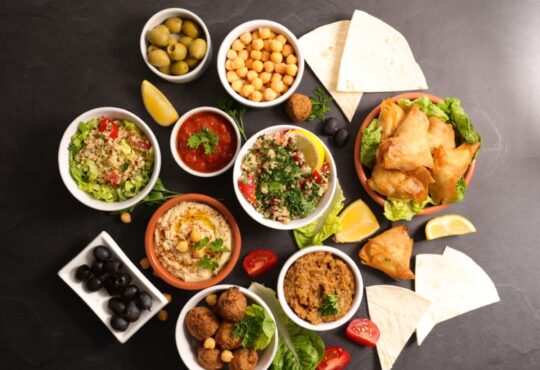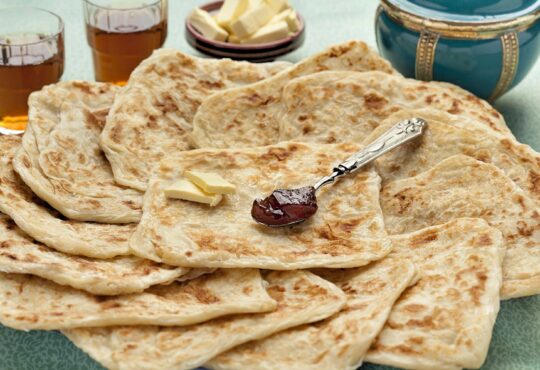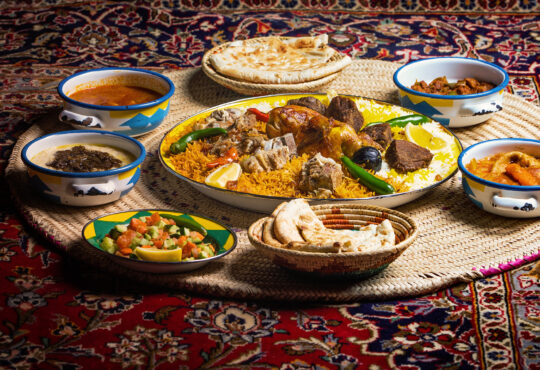Are you looking for an authentic African food experience and truly unique and delicious food? If so, then you should try some of the most popular Sudanese food dishes.
From savory stews to spicy curries, there is something for everyone when it comes to Sudanese cuisine.
When most people think of Sudan, they probably don’t imagine a land rich in culinary traditions but the reality is that Sudanese cuisine is a diverse and flavorful fare that is definitely worth sampling if you get the chance.
So what are you waiting for? Pack your bags and get ready to sample some of the best food Africa has to offer!
Related Content
Disclaimer: Please keep in mind that we may receive a commission when you click on our links and make a purchase. This, however, has no bearing on our reviews.
14 Sudanese Food Dishes Everyone Should Try
There are many unique and delicious dishes to choose from, and in this blog post, we’ll talk about some of the best ones. So if you’re ever in Sudan, make sure to sample some of these amazing dishes!
Kamounia
Kamounia
Kamounia comes from the word cumin, which is the defining spice of this dish. It is s delightful stew that is made with beef or liver. The spices used are typically parsley, olive oil, garlic, and of course, loads of cumin.
It is served with rice and goes well with a fresh tomato salad on the side.
>> Kamounia Recipe
Aseeda (Asida)
Aseeda is a staple food in Sudan. For those who are not African, it might be hard to explain. It is a bready, ricey kind of mixture that is eaten with foods instead of bread or rice. It can be eaten with any meal, or even alone.
Aseeda is a thick porridge made from different grains like corn, red millet, and sorghum. It is similar to the West African Fufu or the South African Pap.
>> Aseeda Recipe
Kisra Bread
Bread is an essential part of any diet. If the bread is good then generally the food tastes good too, or even better. For Sudanese food, that bread is Kisra.
A unique and popular fermented bread or pancake made on a special crepe pan from wheat flour. It is a homemade bread that is made daily in Sudan.
The ingredients are flour, water salt, and yogurt. The dough is left to ferment naturally, for around 3 days. Kisra goes great with soups, stews, or even as a lunch wrap.
>> Kisra Recipe
Shahan Ful
Shahan Ful | Credit: Temesgen Woldezion
This traditional yummy breakfast dish is loved so much that some people in Sudan eat it at all times of the day.
Some say that it is one of the dishes that is synonymous with Sudanese people, even though Ful is said to have originated in Egypt centuries ago. It is also considered the undisputed national food of Sudan.
Ful makes for a great breakfast because it is packed with protein and fiber. This is just what the doctor ordered for an action-packed day.
>> Shahan Ful Recipe
Gollash (Sudanese meat pie)
Gollash
Gollash can best be described as a classic Sudanese meat pie. It’s considered a regular dish in most upmarket restaurants in Sudan.
The main part of Goulash is the minced meat. It is lightly seasoned with a bit of salt, pepper, and some parsley to keep the natural flavor of the meat.
To make Goulash, the meat is first pre-cooked and then layered with filo pastry and taken into an oven.
>> Goulash Recipe
Moukhbaza (Mashed banana paste)
Moukhbaza
This is an unbelievable dish that combines two of the most unthinkable ingredients into a unique dish.
Moukhbaza is mashed-up bananas and hot chili peppers. I guess the idea is that it gives the strange yet perfect balance between sweet and spicey.
The recipe is simple. Just mash up ripe bananas and fill them into the hollow, lightly roasted hot chili peppers. I’m not a banana fan, so I’ll pass.
>> Moukhabaza Recipe
Baseema
Baseema
It’s the simple things that, when made really well and with love, taste the best. This is the case with the understated Baseema.
This simple cake really tastes amazing. The ingredients are nothing special but they come together to make a baked surprise. Baseema is a sponge cake made with lemon juice and coconut.
>> Baseema Recipe
Gorassa (Sudanese flatbread)
Gorassa
I’ve said it before and I’ll say it again. Great bread can really take a good dish to the next level. That’s what Gorassa is, a bread that will make your food taste spectacular.
It is also called Sudanese flatbread or just Sudanese bread. Yes, it is one of the two national breads of Sudan. If you can make this bread, then you are definitely gifted.
>> Gorassa Recipe
Basbousa
Basbousa
The Basbousa is a wet semolina cake that is common across the middle-east.
In Sudan, Basbousa is made with yogurt and flavored with lemon and cinnamon. The final touch is to soak the cake in sugar syrup.
Bassbousa is very sweet, usually, and can be considered a kind of a dessert rather than a regular cake, due to its wet consistency. It is served with tea or Sudanese coffee after dinner.
>> Basbousa Recipe
Kajaik (Sudanese fish stew)
Kajaik
Kajaik is one of the many gifts that the mighty Nile has given to the people of Sudan.
It is an elegant fish stew made with freshwater fish from the Nile. The fish is de-boned and shredded and then slowly cooked into a soup-like consistency.
It can have a variety of spices and basic vegetables.
>> Kajaik Recipe
Miris (Sudanese lamb fat stew)
Miris
Miris is a dish that is, interestingly, made with onions, dried okra, and sheep’s fat.
Other vegetables may also be included like eggplant and potatoes. It is eaten together with Aseeda porridge.
If porridge is not your thing, it can also be served with Sudanese flatbread.
This Sudanese lamb fat stew is usually cooked over a traditional open fire.
>> Miris Recipe
Kawari (Sheep’s hooves stew)
Kawari
As far as soups go, Kawari is said to be the best and most popular soup in Sudan. In addition to the vegetables and spices, its main ingredient is sheep’s hooves.
I’m sure it is one of those things that you either love to death or hate like the plague. I will let you try it first and then decide which is true for you.
>> Kawari Recipe
Sudanese coffee
Sudanese coffee
Sudan has several distinct beverages and coffee is one of them. Sudanese coffee is a classic, flavorful blend of beans from Sudan and Ethiopia.
Sudanese coffee has been used for centuries by Sudanese people who have traditionally ground their own coffee at home or in the office with a mortar and pestle.
Sudanese coffee is typically brewed to be strong, very sweet, and served black without cream or sugar.
>> Sudan’s Coffee Recipe
Sudanese Cinnamon Tea
The most popular drink for many Sudan is cinnamon tea, a strong blend of black tea steeped with cinnamon sticks. Sugar is used heavily to sweeten the brew.
This warm Sudanese drink is only a drink to enjoy but it is also a healthy one. Cinnamon tea is a powerful drink with various health benefits, including aiding weight loss, improving heart health, alleviating menstrual cramps, and reducing inflammation and blood sugar levels.
>> Sudanese Cinnamon Tea Recipe
Sudan’s National Food
Sudan’s national dish food is Ful Medames.
Served in homes and restaurants throughout the country, Ful Medames is made from Fava beans, also known as broad beans, and eaten with an assortment of flatbreads such as Eish Masri or Kisra, Sudan’s national bread.
Popular Sudanese Dishes
Sudan has many popular dishes to offer. Some of the more notable Sudanese food dishes are listed below.
Kisra (Sudan’s national bread), Kamounia (Meat stew), Sudanese coffee, and Miris (Sheep’s fat stew).
Sudanese Food Culture
Sudanese are among some of the most hospitable people in the world. Everyone is welcome to join them for food which is usually offered in a large shared tray.
The food tray will basically include various meat stews, always accompanied by porridge (Aseeda), and Kisra (Sudan’s popular bread), and sometimes vegetables, salads.
Sudanese eat with their right hand and it’s regarded to be inappropriate to do otherwise.
The Bottom Line
Sudan was once home to a great African empire. However, while the empire is history, the Sudanese still eat like kings.
Their food is natural, tasty, and relatively easy to make daily. If you can’t find a Sudanese restaurant nearby, why not try making some of these Sudanese foods at home and let us know in the comments what happens…
Like it? Share it!





